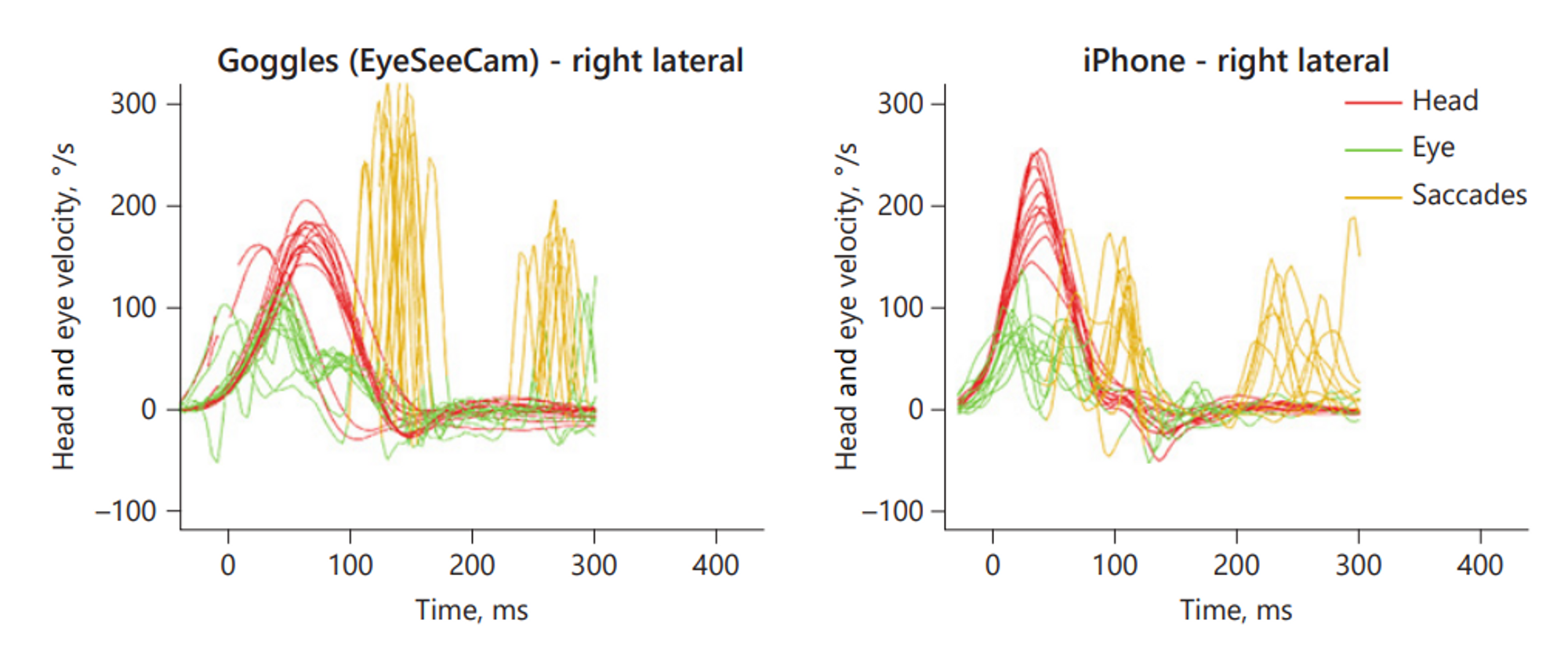
//
Proof of Concept for an “eyePhone” App to Measure Video Head Impulses
Search
Try Notion
Proof of Concept for an “eyePhone” App to Measure Video Head Impulses
Authors text
Parker, Taylor Max , Farrel, Nathan, Otero-Millan, Jorge, Kheradmand, Amir, McClenney, Ayodele, Newman-Toker, David
Journal/Book
Digital Biomarkers
Year
2020
Abstract
Objective: Differentiating benign from dangerous causes of dizziness or vertigo presents a major diagnostic challenge for many clinicians. Bedside presentations of peripheral vestibular disorders and posterior fossa strokes are often indistinguishable other than by a few subtle vestibular eye movements. The most challenging of these to interpret is the head impulse test (HIT) of vestibulo-ocular reflex (VOR) function. There have been major advances in portable video-oculography (VOG) quantification of the video HIT (vHIT), but these specialized devices are not routinely available in most clinical settings. As a first step towards smartphone-based diagnosis of strokes in patients presenting vestibular symptoms, we sought proof of concept that we could use a smartphone application (“app”) to accurately record the vHIT. Methods: This was a cross-sectional agreement study comparing a novel index test (smartphone-based vHIT app) to an accepted reference standard test (VOG-based vHIT) for measuring VOR function. We recorded passive (examiner-performed) vHIT sequentially with both methods in a convenience sample of patients visiting an otoneurology clinic. We quantitatively correlated VOR gains (ratio of eye to head movements during the HIT) from each side/ear and experts qualitatively assessed the physiologic traces by the two methods. Results: We recruited 11 patients; 1 patient’s vHIT could not be reliably quantified with either device. The novel and reference test VOR gain measurements for each ear (n = 20) were highly correlated (Pearson’s r = 0.9, p = 0.0000001) and, qualitatively, clinically equivalent. Conclusions: This preliminary study provides proof of concept that an “eyePhone” app could be used to measure vHIT and eventually developed to diagnose vestibular strokes by smartphone.
Citation
Digit Biomark 2021;5:1–8
Broad Topic
Diagnosis
Measuring eye movements